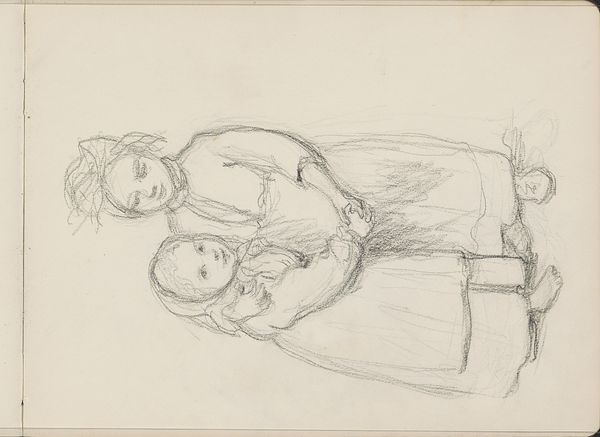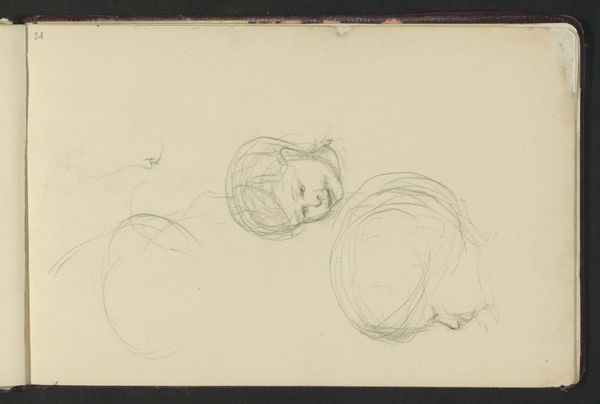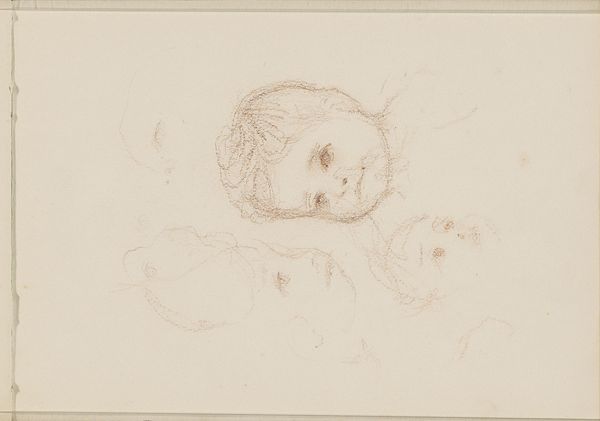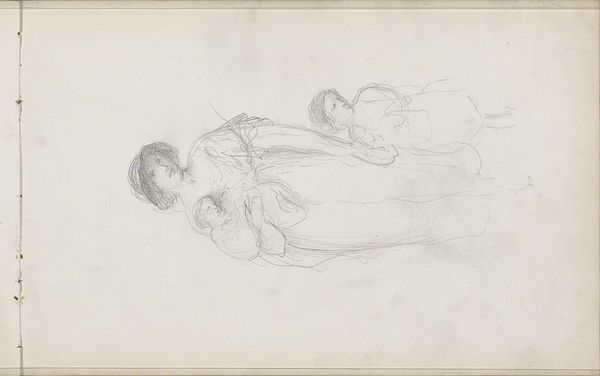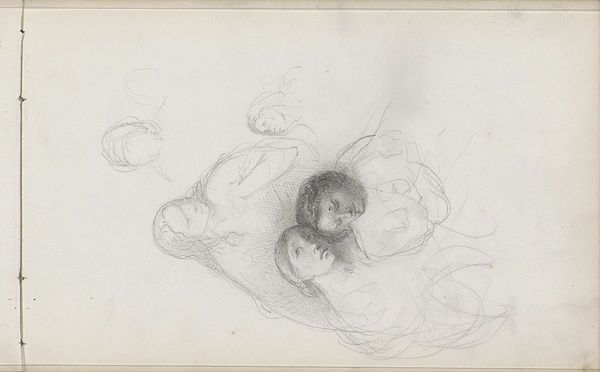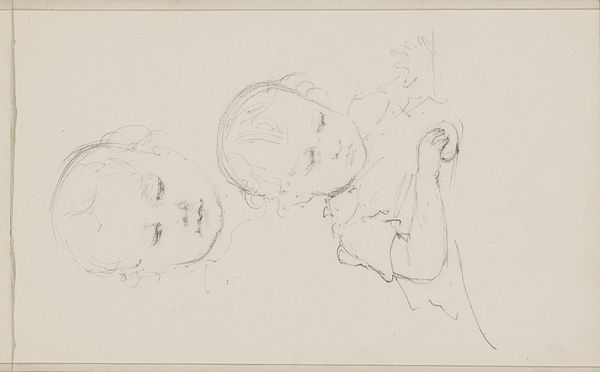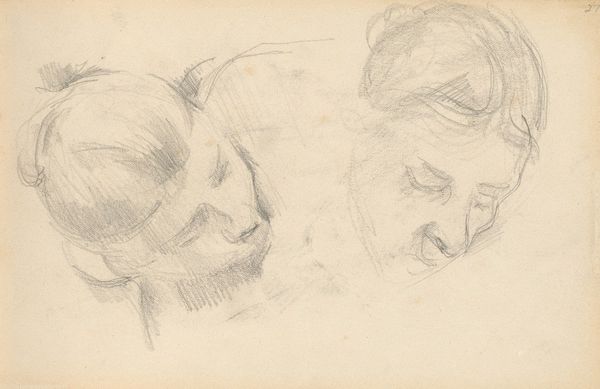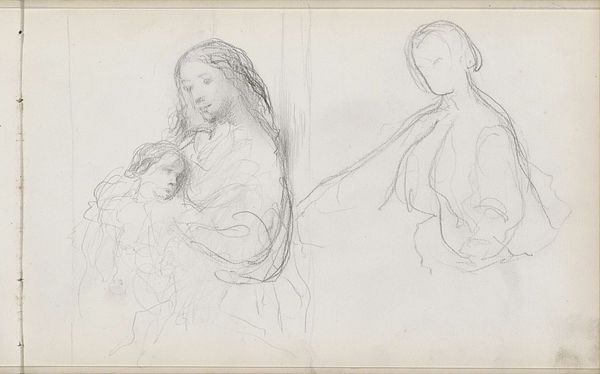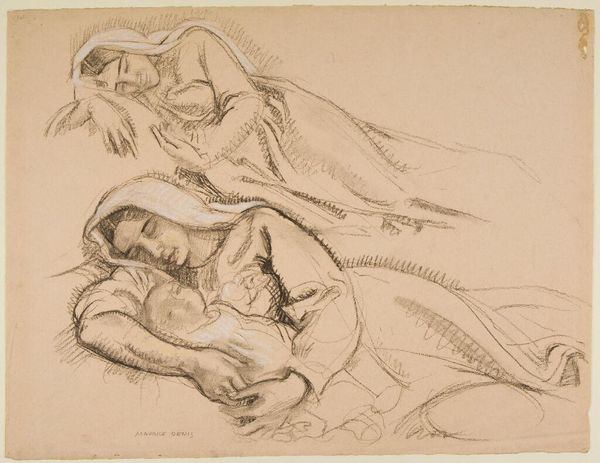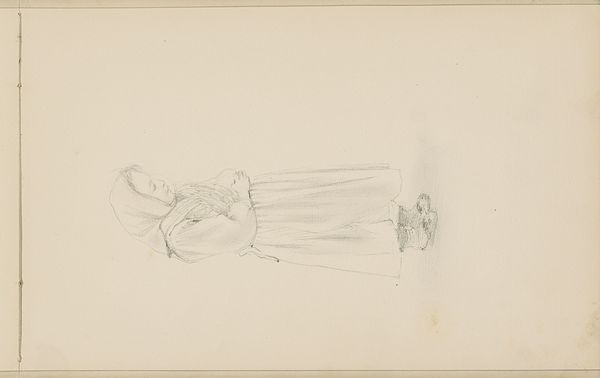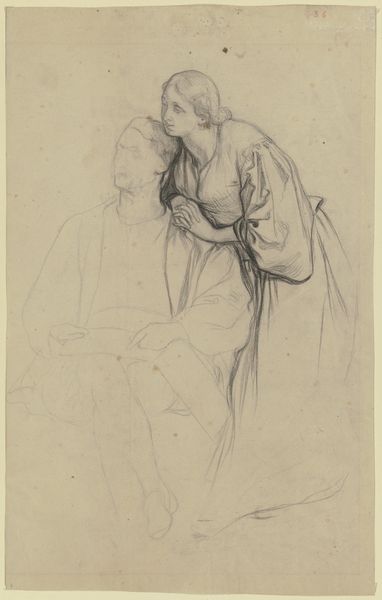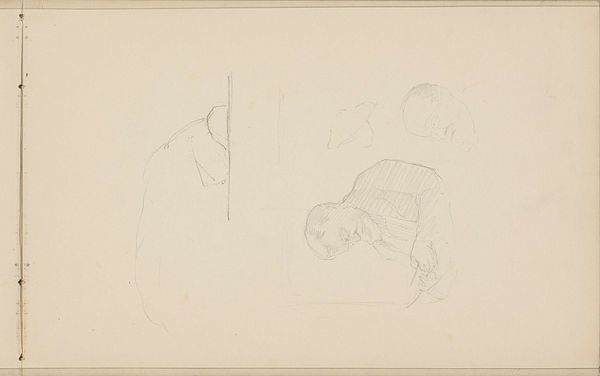
drawing, paper, pencil
#
portrait
#
pencil drawn
#
drawing
#
pencil sketch
#
figuration
#
paper
#
pencil
#
realism
Copyright: Rijks Museum: Open Domain
Curator: Immediately I’m struck by the lightness of being here, that sort of hovering quality that suggests dreams or a sort of ethereal realm. Editor: Yes, it's a delicate pencil drawing. The Rijksmuseum identifies it as "Kneeling Woman, a Girl, and an Angel," attributed to Bastiaan de Poorter around 1858. The sketchiness, the unfinished quality, suggests the intimacy of a private devotional act. Curator: A devotional act, perhaps, or maybe even just a moment of quiet contemplation. The figures almost blend into the paper, like whispers on a breeze. The lines are so soft, so tentative. It feels very intimate and personal, almost as if we’re eavesdropping on a sacred moment. Editor: And note how de Poorter situates these figures. The kneeling woman, presumably in prayer with the girl, is being watched over by this almost ghostly angel. What does it mean to be "watched over" and who has access to divine protection, especially in the context of 19th-century societal structures that very much restricted who mattered. Curator: You know, the ‘N’ etched next to the angel’s head throws me. Is that a note to himself? A rejected signature? It reminds me that artmaking is always a process, not just a pristine end product. I bet the artist wouldn't have planned for it to ever be viewed like this. I can see him with his drawing, making art for its own sake. Editor: And speaking of “end product,” consider what sketches like these allow us to see. How often are the labour, intention, and initial material practices of artmaking erased or shrouded? In our era of pristine image consumption, something like this actually resists the commodification of images, don’t you think? Curator: Absolutely, it disrupts the expected perfection and celebrates the artistic process. It humanizes everything! For me, I keep coming back to the sheer emotional transparency of this piece. You feel everything through these minimal pencil strokes. What does the image mean to you? Editor: Well, I see something more than "emotional transparency," actually. These fragile representations suggest the very real precarity of girlhood in a world not built to protect it. Curator: A sobering point! That raw quality adds another dimension, definitely. Editor: For me, thinking about women's access to a higher power, or perhaps their only hope to a better future—this gives the artwork a new, compelling depth. Curator: It's the tension, isn't it? A raw sketch holding such complex layers. It stays with you, those wispy pencil lines suggesting the deepest kind of truths.
Comments
No comments
Be the first to comment and join the conversation on the ultimate creative platform.
